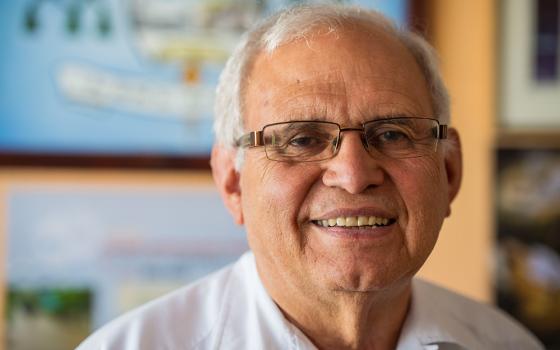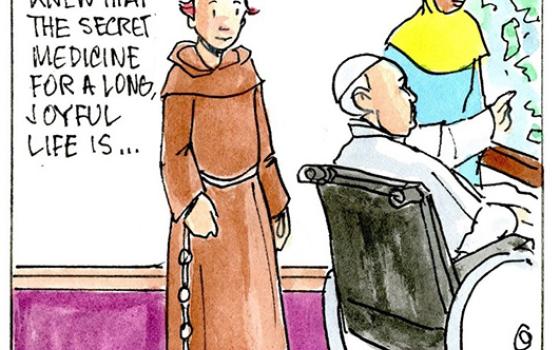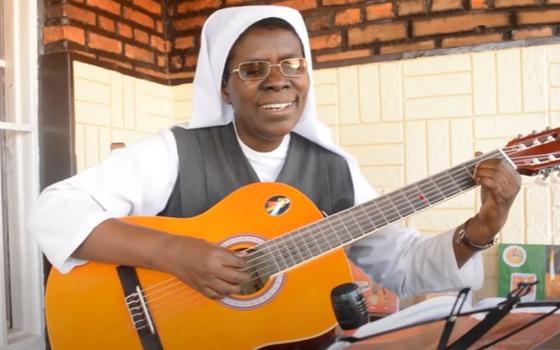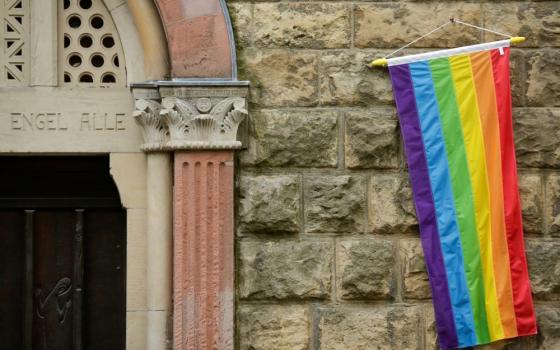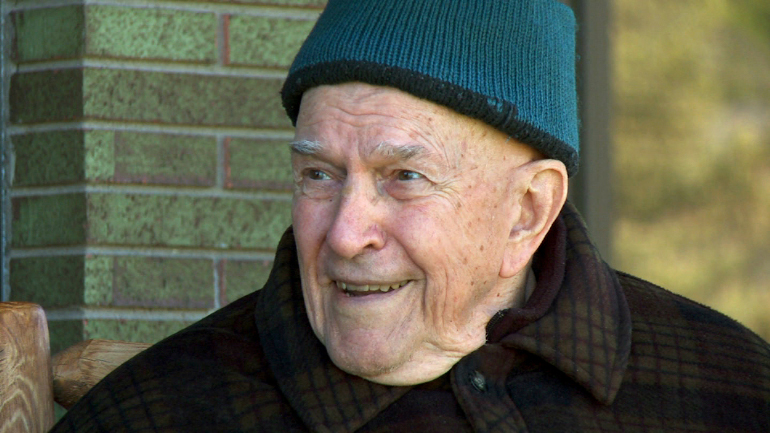
“Thomas Keating: a Rising Tide of Silence” gently documents the life of Fr. Thomas Keating, integrating his personal history and spiritual journey in a compelling blend of interviews with him and his Cistercian brothers, footage of Keating’s talks at interreligious gatherings, interaction with people who come on retreat, and in one case, his visits to Jens Soering, a prisoner serving life for double murder. Over time, Keating’s “centering prayer” method influenced Soering to live his life as a prisoner in a fruitful way, completely changing him, says Keating.
Keating, a Trappist priest, was born into a prosperous New York family in 1922. His mother was a Bible Christian and his lawyer father a non-practicing Catholic. This did not stop the young Keating from getting up early as a child and sneaking off to mass. During his first year at Yale, Keating began seeking answers to life’s meaning and eventually entered the Trappist monastery in Valley Falls, R.I., in 1944. When the monastery burned down the community moved to Spencer, Mass. Keating was appointed superior of the Trappist community at St. Benedict’s Monastery in Snowmass, Colo., in 1961 and elected abbot of St. Joseph’s Abbey in Spencer in 1961.
After serving as abbot for 20 years, Keating resigned in 1981 and returned to Snowmass. Keating is best known as one of the three “architects” of the contemporary prayer method — “centering prayer” — along with William Meniger and M. Basil Pennington. He is also one of the most prominent leaders in interreligious dialogue recognized and respected by religious leaders world over. But his journey to the pinnacle of understanding silence as the language of God’s infinite love that can unite all people was not easy for him or his community. His first 10 years as the abbot of St. Joseph’s is characterized as demanding of himself and the community. He then underwent a transformation from “asceticism to contemplation” that eventually divided the community, hence his resignation.
The film is framed with many of Keating’s sayings, such as “The spiritual journey does not require going anywhere because God is already with us and in us” and “the more we know about nature the more we know about the mind of God.”
Keating does not merely appreciate God, humanity, creation, science and nature but folds all of creation and reality, divine and earthly, into a zone for silence that is beyond even contemplation, a space that is “a deeper silence called spaciousness that means to awake to — what? You don’t know but it is marvelous, generous, tender and sweet” and “perceives the good that is in everything.”
John Osborne, a friend of Keating’s who spent some time in the monastery, interviews Keating throughout and asks some of Keating’s former confreres at St. Joseph’s what they received from their former abbot. Their responses are very moving and reveal the bond created by fraternity in a monastic community transcending all tensions and misunderstanding. They reminded me of the Trappist community as seen in the 2010 French film “Of Gods and Men.” This part of the film comes toward the end and it is what touched me the most. It makes Keating’s words all the more meaningful, “Vulnerability means to be hurt over and over again without seeking to love less but more.”
This short film (about 70 minutes) is perfect for personal and group reflection and as a companion to Keating’s many books. It is being released in theaters Los Angeles on March 7 and in New York on April 4. It was directed by Peter C. Jones and Elena Mannes.

